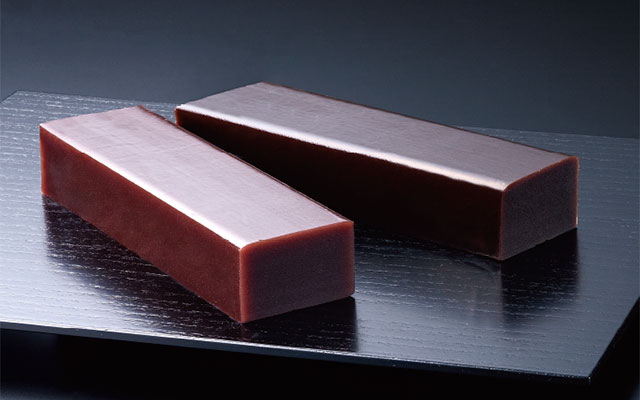History
NERI-YOKAN: A Flavor Born Out of the History
of KAISHINDO’s Combination of AZUKI, KANTEN, and SUGAR

A beautiful jet-black luster cut into bite sizes. NERI-YOKAN, the symbol of KAISHINDO, are finished with earnest kneading while adding heat for a nice char.
Looking at the history of these NERI-YOKAN made from traditional methods, we see that they first began by being cooked in cast iron pots over open fires. They were named “KURO-YOKAN” (Black YOKAN) because they came out completely black, even though no black cane sugar had been added.
Later, with the evolution of the manufacturing process, cast iron pots were replaced with copper pots. When high-quality sugars were obtained, the blackness disappeared and they were then called “KAIRYO-YOKAN” (Improved YOKAN). This takes us to about 100 years ago. The name was then changed to “HONNERI-YOKAN” (Original YOKAN). At roughly the same time, black cane sugar was obtained, and the YOKAN became black, giving rise to the new “KURO-YOKAN” we have today.
YOKAN kneaded over fire have evolved through various changes. The “HONNERI” and “KURONERI,” said to be KAISHINDO’s progenitors, were born from this background. The manufacturing process and flavors brought about through this long history support the roots of the Japanese confectionery culture. It is our mission to take this culture and continue to maintain this unchanging taste throughout the ages.
